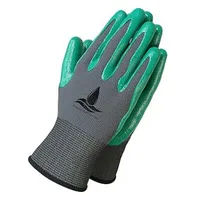Want more butterflies? 7 tips for attracting them to your yard
Transform your outdoor space into a butterfly paradise with these simple steps
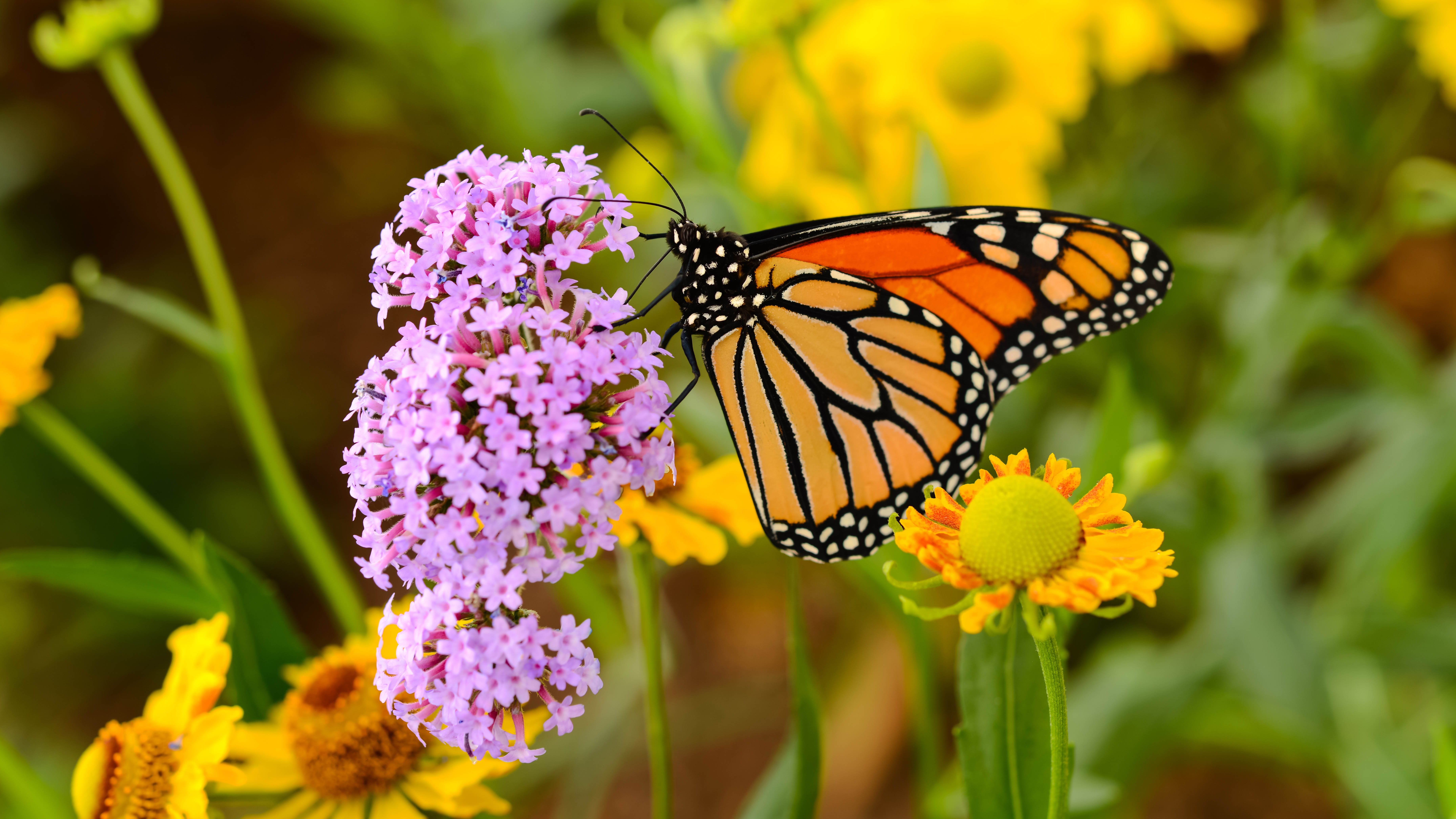
Summer brings the perfect opportunity to create a garden that attracts beautiful butterflies. These pollinators help plants grow and thrive, but many global butterfly populations are declining.
By providing the right environment, you can enjoy the spectacular sight of butterflies dancing among your flowers.
Creating a butterfly-friendly yard involves more than just planting pretty plants. Butterflies need food sources, water, shelter, and places to reproduce. With some thoughtful planning and the right plants, butterflies will visit throughout the growing season.
From selecting nectar-rich flowers to creating safe water sources, each step builds toward the perfect butterfly habitat. Follow these tips to make your yard a regular stop this summer (and beyond).
Why this matters more than ever
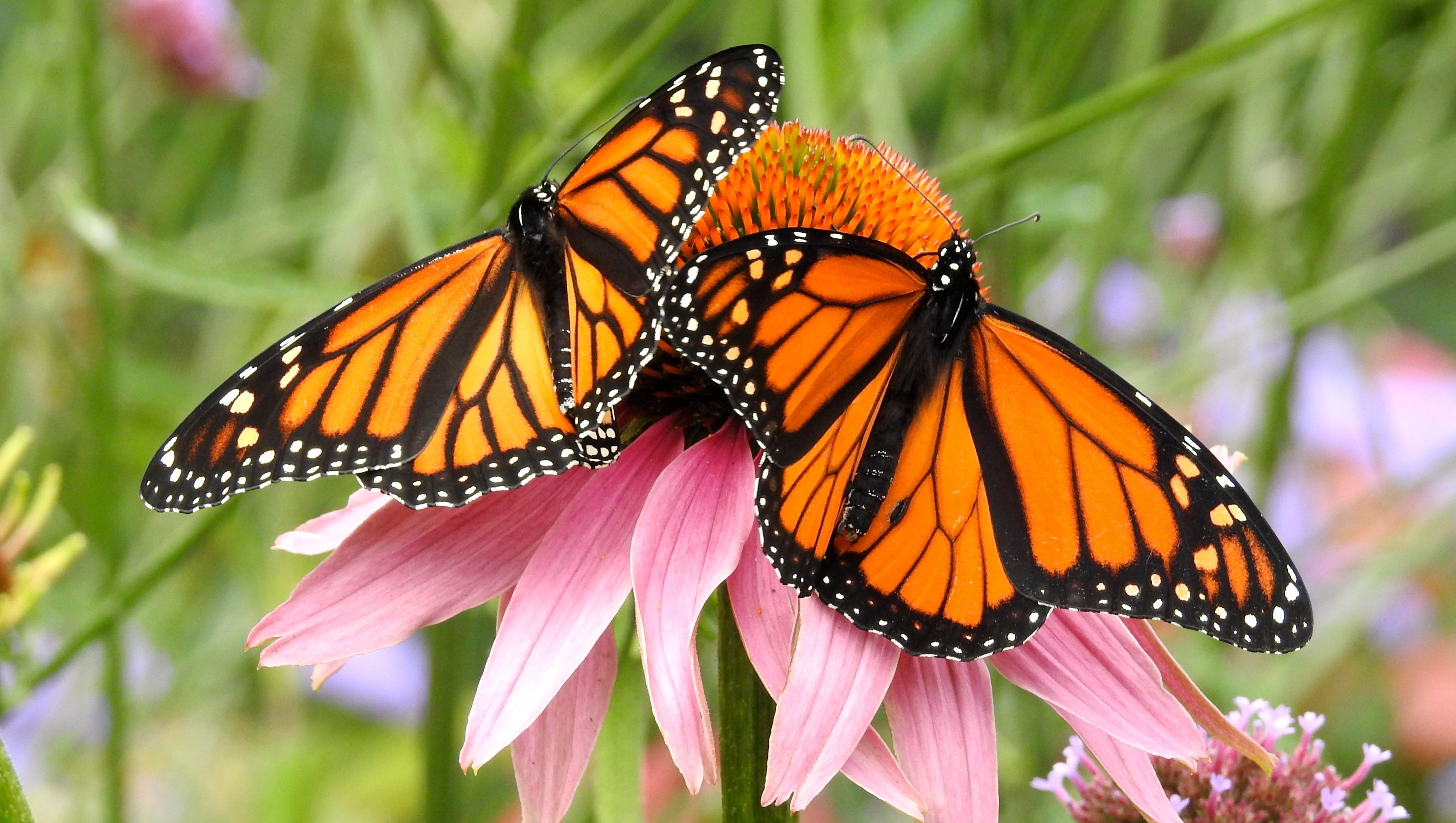
Recent research reveals an alarming trend: butterfly populations across the United States have dropped by 22% over the past two decades, with two-thirds of studied species declining by more than 10%.
The good news is that individual gardeners can make a real difference. As biology professor Matt Forister from the University of Nevada explains, "unlike bigger animals, insects respond to small changes," emphasizing that even small butterfly-friendly gardens contribute to conservation efforts.
By creating the right environment in your garden, you're directly helping reverse these troubling population declines while supporting the broader ecosystem that depends on these vital pollinators.
1. Choose the right flowers for nectar

Start with flowers that provide the nectar butterflies need for energy. Butterflies are naturally drawn to vibrant colors like red, orange, yellow, and purple, and they can see ultraviolet light reflected by petals. The best butterfly flowers combine sweet nectar, accessible shapes, and appealing scents.
Plant these proven butterfly magnets in your garden: aster, lavender, milkweed, sage, and sunflowers. These flowers offer the perfect combination of color, nectar quality, and accessibility that butterflies crave. Group similar flowers together in clusters rather than scattering individual plants — this creates more visual impact and makes it easier for butterflies to locate food sources.
Choose flowers with flat or clustered blooms that provide stable landing platforms. Butterflies need somewhere to perch while they feed, so avoid flowers with deep, narrow tubes that make nectar difficult to access.
2. Plan for continuous blooms

Butterflies are active from spring through autumn, so you need flowers blooming throughout this entire period. Create a succession of blooms by combining perennials (plants that return each year) with annuals (plants that last one growing season).
Early spring flowers like crocuses and primroses welcome the first butterflies of the year. Summer favorites include zinnias, marigolds, and cosmos. Late-season bloomers like asters and goldenrod provide crucial food sources as butterflies prepare for winter or migration.
Keep your flowers producing fresh nectar by deadheading spent blooms regularly. Old flowers contain little to no nectar, so removing them encourages plants to produce new blossoms. This simple task ensures a continuous supply of fresh nectar throughout the season.
3. Create safe water sources
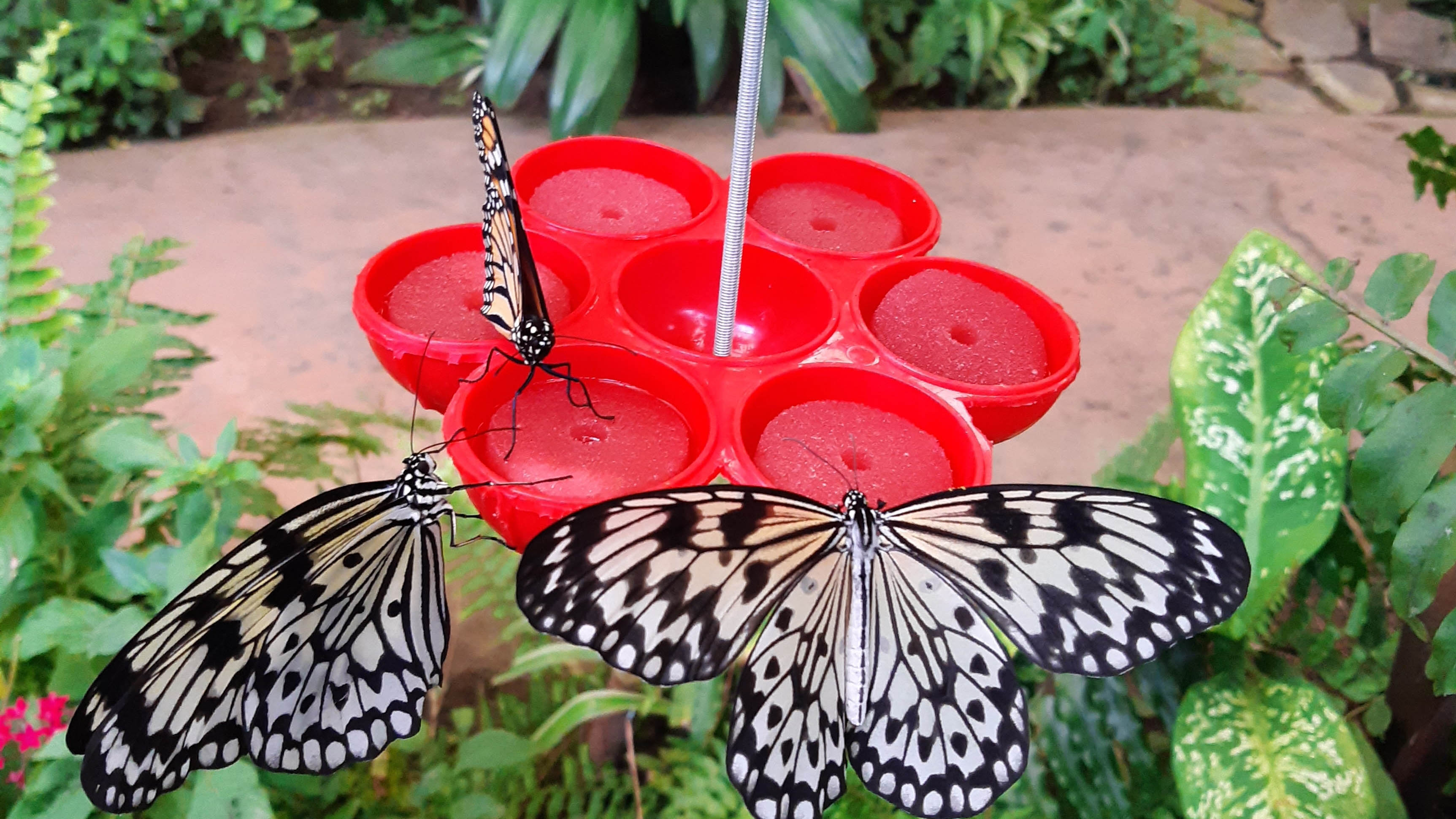
Butterflies need water but can't land on open water surfaces without risking drowning. Create safe drinking spots by making shallow mud puddles or "puddling stations." This behavior, called puddling, allows butterflies to drink safely while absorbing minerals from the soil.
Make a puddling station by filling a shallow dish with 2-3 inches of soil or sand, then adding water until the surface glistens. Place the dish in a sunny location where light will attract butterflies' attention and keep them warm while drinking.
For extra nutrition, add 1-2 tablespoons of salt to the soil before adding water. This creates a "salt lick" that provides sodium butterflies can't get from nectar alone.
Hummingbird nectar feeders: from $16 @ Amazon
<p>Amazon has a wide selection of butterfly feeders that attract colorful visitors to your garden. Features include nectar trays, fruit compartments, and ant moats for effective feeding. Prices start as low as $15 for durable feeders with multiple feeding options and easy-clean designs.4. Provide extra food sources

Enhance natural nectar with homemade butterfly food. Mix 3 teaspoons of sugar per cup of water, boil until dissolved, then cool completely. Pour this solution into shallow feeding dishes placed near your flowers.
Replace the sugar water every few days to prevent fermentation, and clean feeders regularly to prevent mold growth.
You can also make your feeders more attractive by turning them into a fruit plate for visiting butterflies. Add pieces of brightly colored fruit like lemon, apples, or oranges. Butterflies associate bright colors with food sources, so colorful fruit helps them locate your feeding stations.
5. Maximize sunlight exposure

Butterflies are cold-blooded creatures that depend on sunlight for warmth and energy. Plant your butterfly garden in the sunniest area possible — at least six hours of direct sunlight daily is ideal.
Add basking spots by placing flat, wide stones among your flowers. Choose gray or light-colored stones that warm up in the sun but won't become too hot. Avoid black stones that can overheat and burn delicate butterfly feet.
Position basking stones where they'll receive morning sun, as butterflies need to warm up after cool nights before they can become active.
6. Create shelter and protection
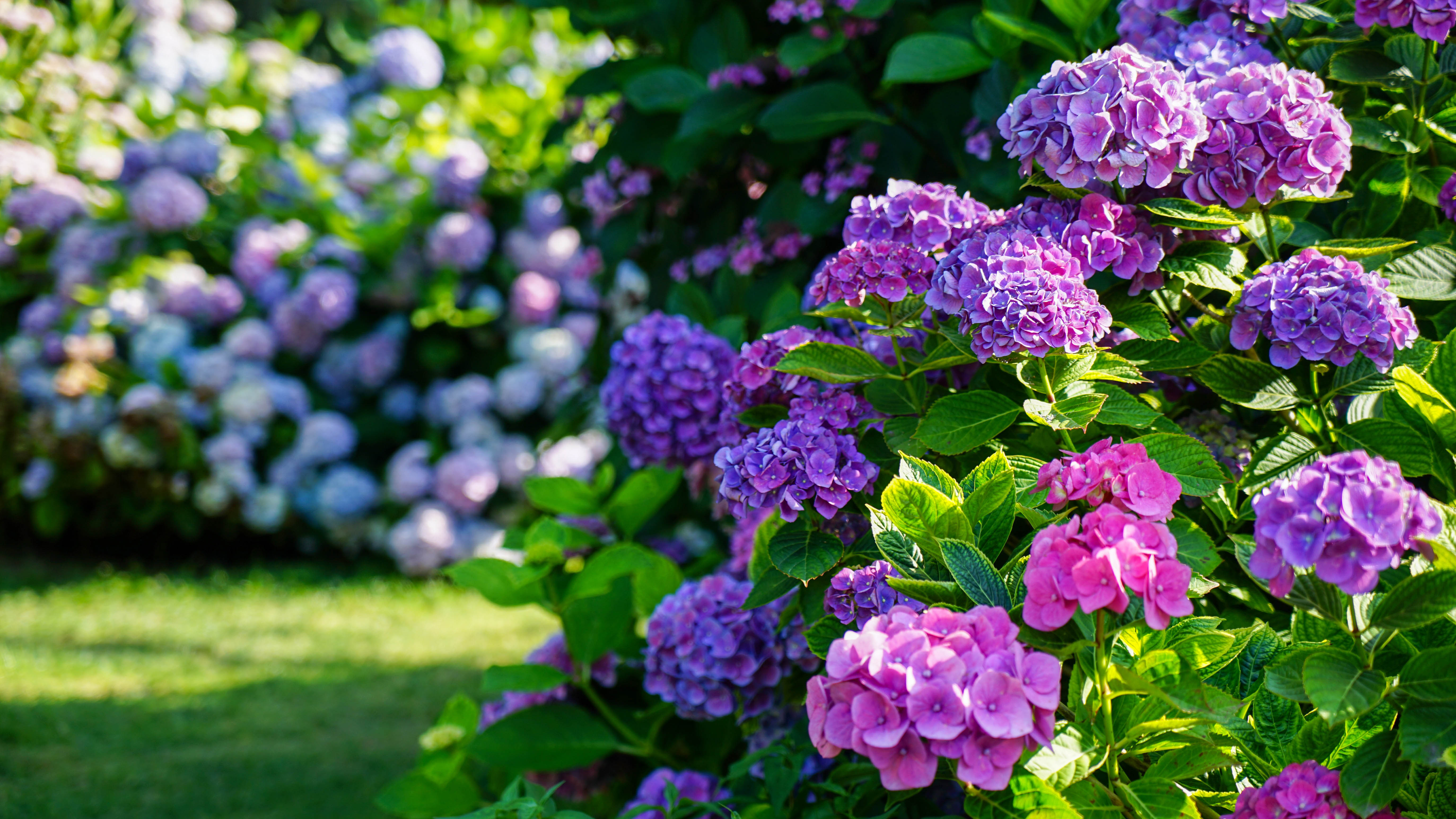
Butterflies need protection from wind, rain, and predators. Provide natural shelter with a variety of plants at different heights: tall flowers, medium shrubs, and ground cover create layers of protection.
Include some wild areas in your yard where butterflies can hide. Log piles, rock collections, and patches of tall grass provide essential shelter. You don't need buy expensive butterfly houses, simple natural materials work better.
Plant native trees and shrubs around your garden's perimeter to create windbreaks that protect butterflies during storms and high winds.
These gardening gloves provide an excellent grip and have a comfortable fit around the wrist, plus they are breathable and machine washable and available in three sizes. They are perfect when you need a medium-duty gloves that provides dexterity. Plus, they come in a pack of two.
7. Avoid harmful chemicals

Never use pesticides, herbicides, or chemical fertilizers in your butterfly garden. These products can kill butterflies directly or contaminate the nectar and plants they depend on. Even "organic" pesticides can harm butterflies.
Instead, use organic gardening methods like composting, companion planting, and encouraging beneficial insects that naturally control pests. Coffee grounds, eggshells, and banana peels make excellent natural fertilizers.
If you must address pest problems, use targeted physical methods like row covers or hand-picking rather than chemical sprays.
Ready for more garden wins? Avoid 5 common lawn care mistakes that are killing your yard and learn how to revive a dying houseplant — 7 tips that actually work.
Plus, if you're looking to encourage more hummingbirds into your yard, try these 7 tips every bird-lover should know.
More from Tom's Guide
- 7 ways to care for your spring bulbs after they've flowered
- How to keep birds cool this summer — your backyard visitors will thank you
- How to make your home smell amazing — try these top tips
Get instant access to breaking news, the hottest reviews, great deals and helpful tips.

Kaycee is Tom's Guide's How-To Editor, known for tutorials that skip the fluff and get straight to what works. She writes across AI, homes, phones, and everything in between — because life doesn't stick to categories and neither should good advice. With years of experience in tech and content creation, she's built her reputation on turning complicated subjects into straightforward solutions. Kaycee is also an award-winning poet and co-editor at Fox and Star Books. Her debut collection is published by Bloodaxe, with a second book in the works.
You must confirm your public display name before commenting
Please logout and then login again, you will then be prompted to enter your display name.

